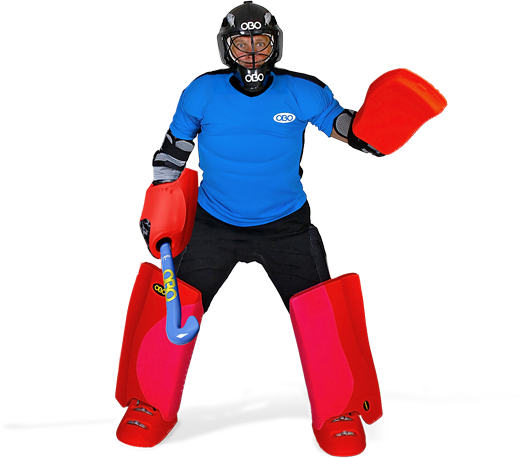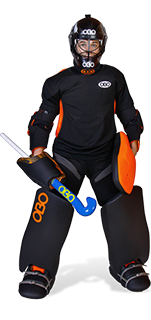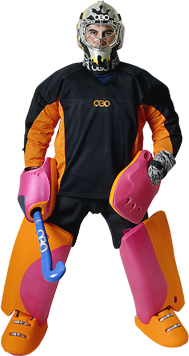KEEPERS RESOURCES

P-flicks: commit or react?
Penalty flicks are dangerous territory for goalkeepers. Going up against a deadly shooter who , the goalkeeper often doesn’t stand much of a chance in stopping the ball. However, they are more likely to allow a goal if they commit and end up getting wrong footed; going the wrong way to where the ball is headed. Instead, by reacting, the goalkeeper has an increased chance of stopping the ball; moving in the flick’s direction to cover the shot.
Committing
Committing on the flick is essentially making up your decision of where you will go (i.e. left or right) and going that way as soon as the flick has been taken, even if they end up getting beaten. The goalkeeper makes the choice about where they will go and sticks to it; paying little attention to where the shooter is actually shooting at. This may be down to watching the flick taker’s eyes or body position, in an attempt to go the way they appear to be shooting at. If you watch soccer (football), then you will notice that it is a technique often used in penalty shoot-outs: the goalkeepers will usually try to commit to the shooter’s strong side, or usual shot placement, so that they can try to block the shot they think they will be facing.
Reacting
Reacting is the opposite of committing: instead of choosing where they will go, the goalkeeper waits for the flick to be taken and then moves in relation to where the ball is headed. By doing so, they have a better chance of making the save; going the right way to be able to block the incoming ball. In this way, the goalkeeper increases their chances of save making. Even if they get beaten marginally, they have still gone the right way and done their best, which is all that can be asked of them.
There are a number of reasons why reacting is better than committing to the flick. At the higher levels of play, flick takers can fool the goalkeeper by pretending to shoot in a certain way; making a deft move by looking one way and going the other. Another way is to position the body so as if to be shooting a certain way, but then turn and go the other. By doing this, the shooter is able to outwit the goalkeeper and send them the wrong way. However, by not committing to the pretend shot, the goalkeeper is able to gain an advantage; not being tricked and being able to go the correct way to meet the shot.
You may also be playing against a regular opponent, but even if you play the opposition regularly (which helps you in knowing what are the shooter’s preferences), they may choose a different flick taker; reacting counteracts the problem of working out where the flick taker will go.
Studies have also proven that a goalkeeper is more successful if they react. Although it doesn’t sound like much, you are 27% more likely to have success stopping the ball when standing and then reacting, than you are picking your way.
Track the ball
In order to have a chance of stopping the flick, you need to track the ball. When watching the flick through to going the correct way, or making the save, you need to focus on the ball from the point it is at the base of the shooter’s stick, through to facing the shot. Focus intently on the ball, trying to maintain your concentration on the shot so you stand the best chance of getting behind it.
Pointers:
- don’t commit to the flick
- react to the flick; wait for the release and follow the flick to go the right way
- watch the ball, tracking it through to the save
React, don’t commit!
Ultimately, you should react to the flick rather than trying to guess and wrongly commit where you would end up putting yourself out of the play. You don’t want to go the wrong way or be made to look stupid, so make sure you wait to see where the ball is headed and move with it. Do your best to react to the flick, than guessing and committing to a shot that doesn’t go where you wanted it to.
Comments
Leave Your Comments Below















